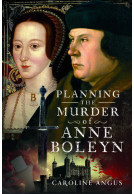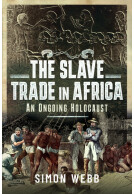The Great Thorpe Railway Disaster 1874 (Hardback)
Heroes, Victims, Survivors
Imprint: Pen & Sword History
Pages: 216
Illustrations: 32 black and white illustrations
ISBN: 9781526764027
Published: 20th September 2021
Shortlisted for the East Anglian Book Award 2022
We are delighted to announce that Phyllida Scrivens' book has been shortlisted for the East Anglian Book Award 2022! Read more here.
(click here for international delivery rates)
Order within the next 7 hours, 18 minutes to get your order processed the next working day!
Need a currency converter? Check XE.com for live rates
| Other formats available | Price |
|---|---|
| The Great Thorpe Railway Disaster… Paperback Add to Basket | £14.99 |
| The Great Thorpe Railway Disaster… ePub (29.0 MB) Add to Basket | £6.99 |
The Great Thorpe Railway Disaster of 1874 is the third title from Norwich writer and biographer Phyllida Scrivens, who lives less than half a mile from the site of the fatal collision.
At Norwich Station on 10 September 1874, a momentary misunderstanding between the Night Inspector and young Telegraph Clerk resulted in an inevitable head-on collision. The residents of the picturesque riverside village of Thorpe-Next-Norwich were shocked by a ‘deafening peal of thunder’, sending them running through the driving rain towards a scene of destruction. Surgeons were summoned from the city, as the dead, dying and injured were taken to a near-by inn and boatyard. Every class of Victorian society was travelling that night, including ex-soldiers, landowners, clergymen, doctors, seamstresses, saddlers, domestic servants and a beautiful heiress.
For many months local and national newspapers followed the story, publishing details of subsequent deaths, manslaughter trial and outcomes of record-breaking compensation claims. The Board of Trade Inquiry concluded that it was ‘the most serious collision between trains meeting one another on a single line of rails […] that has yet been experienced in this country.’
Using extensive research, non-fiction narrative, informed speculation and dramatised events, Phyllida Scrivens pays tribute to the 28 men, women and children who died, revealing the personal stories behind the names, hitherto only recorded as a list.
As featured
ASLEF Journal – The Magazine of the Associated Society of Locomotive Engineers & Firemen – April 2024
SHORTLISTED FOR THE EAST ANGLIAN BOOK AWARDS 2022
Eastern Daily Press
A lot of local research and trawling through many documents has gone on by the author Phyllida Scrivens, who has produced a fascinating read. I enjoyed the way this book was written and would be happy to recommend this one to others.
The History Fella
Read the Full Review Here
This is a well-written and easily readable account of human interest stories that accident reports themselves do not relate.
Rail Advert
4.5 out of 5
Read the full review here
...a well-written and easily readable account of human interest stories that accident reports themselves do not relate.
Roger Smith, Rail Advent
If you are looking for an account of the lives of the people who were killed, injured or otherwise directly affected by the Thorpe railway disaster in 1874, this book is for you.
"Nonetheless, the author has gathered an impressive range of material, mainly human interest background, about many of those involved in the disaster. This certainly helps to show the real impact of tragedy...there is much fascinating material here"
Adrian Gray, The RCHS Journal
"The detail and background of people and events made this book an absorbing read."
Great Eastern Railway Society
As Featured In
Who Do You Think You Are? Magazine, December 2021
"A well written and easily readable account, telling the human stories that accident reports themselves do not relate."
Tim Wallis - The Branch Line Society
"Altogether it is an interesting glimpse of late nineteenth century Norwich, and reflects a considerable amount of research."
Philip Wiltshire, The Journal of the Friends of the National Railway Museum Winter 2021-2022
'an outstanding read'
Norfolk Family History Magazine
'With all the pace of a great movie, author Phyllida Scrivens whisks us straight back to the eve of the disaster...With an ease that belies the enormous hard work she must have put into her research, she paints evocative vignettes of the lives of those involved...Skillfully researched and told.'
Family Tree Magazine
As featured in
Norfolk Christmas Gifts
The author, who lives close to the crash site, effectively blends facts with some speculative dramatisation.
David Brown, Best of British Magazine
Featured in 'Latest Releases'
Best of British
The author, who lives close to the crash site, effectively blends facts with some speculative dramatisation.
Best of British, November 2021
As featured in
Lets Talk! September 2021
As featured in Norfolk Magazine
Norfolk Magazine
New book chronicles one of the most tragic rail collisions in history - read full article here
Derek James, Eastern Daily Press
As featured on Stephen Bumfrey's 2.30pm show on BBC Radio Norfolk!Listen here
BBC Radio Norwich
'...an important history and human interest book which deserves to be read, not just in Norfolk and Suffolk, but across the country.'
Derek James, Let's Talk magazine
'Following on from the success of her previous two biographies, Escaping Hitler and The Lady Lord Mayors of Norwich, Thorpe St Andrew resident Phyllida Scrivens brings us a unique illustrated biographical history of this Victorian railway collision.'
Thorpe St. Andrew Parish Life Magazine
Rating: 5 out of 5 stars
NetGalley, Colin Edwards
When I picked up Phyllida Scrivens’ Great Thorpe Railway Disaster 1874, I expected a fairly dry account of why the disaster happened: which rule wasn’t followed by railway staff; what the Board of Trade enquiry found; etc.. I am absolutely DELIGHTED to say the book is much much better than that.
The accident on Thursday, 10th September 1874 resulted in the deaths of 25 people. Trains left Norwich and Great Yarmouth that evening and met head-on at Thorpe St Andrew, two miles east of Norwich.
We get a chapter on the history of the line and then a chapter giving a series of pen portraits of various people in Norwich, Yarmouth and Great Thorpe and what they might have done and thought on the day of the accident. Chapter 3 gives us more pen portraits as people board the trains that evening. We also get the dialogue between the telegraph operator and his inspector at Norwich that was documented at the subsequent enquiry. The 9pm express from London was late and the mail train was waiting at Brundall Station a few miles away, waiting for the line. Inspector Cooper told John Robson to send a message to Brundall Station, instructing them to despatch the mail train along the single line to Norwich. Robson did so, with the message logged at 9:24pm. The express arrived shortly after the message was sent and Cooper didn’t detain it, allowing it to set off down the single line towards Brundall.
Chapter 4 – Impact – is excellent. It describes the moment that the two trains met and how the people we met in earlier chapters fared. Some were killed; some were injured; some were able to walk away. This is vivid stuff.
Chapter 5 – The Days Following – covers the inquests that took place over the next day and Saturday, mostly using the words of the witnesses and the relatives and friends who identified the bodies. Chapter 6 takes us to the Norfolk and Norwich Hospital, where messages were sent to off-duty, retired and trainee staff, urging them to come in and help. We get a chapter on the doctors and surgeons who treated the patients. Other chapters cover the inquiry; the trials of the unfortunate Cooper and Robson; the compensation cases where the survivors (or, more often, the dependents of the deceased) pleaded for money from the Great Eastern Railway. Scrivens also tells us about the heroes who attended the crash site, trying to rescue people or helping them subsequently. We also hear about some survivors, one of whom lived until 1925.
The chronological order of the chapters and the cycling through the locations - the two stations and Thorpe – brings increasing tension to the narrative. The pen portraits make us realise that behind the dry history of a disaster were real people with devastated families: mothers with fatherless babies; parents that lost children; businesses that lost their owners and thus workers without a job and without any income.
This is a really good book. I recommend it to everyone, even if you’re not at all interested in railways.
About Phyllida Scrivens
Phyllida Scrivens lives with husband Victor in Thorpe St Andrew, just outside the city of Norwich, overlooking the picturesque River Yare. In 2016 she achieved a life-long ambition when her first biography Escaping Hitler, was published by Pen and Sword Books, followed by Skyhorse Publications of New York in 2017. Her second book, a group biography entitled The Lady Lord Mayors of Norwich 1923-2017, won the Best Biography Prize at the East Anglian Book Awards in November 2018. The Thorpe Great Railway Disaster of 1874 took place less than half a mile from Phyllida’s home and has fascinated her for many years, directly leading to her third non-fiction title.
Phyllida studied for an MA in Creative Non-Fiction with Biography from the University of East Anglia, graduating in 2014.
The Great Thorpe Railway Disaster
10th September 1874
The Great Thorpe Railway Disaster occurred on 10 September 1874. It was described by the subsequent Board of Trade Inquiry as “the most serious collision between trains meeting one another on a single line of rails that as yet been experienced in this country”. It is a fascinating tale and one that has captured the imagination of residents of Norwich and the nearby riverside village of Thorpe St Andrew, for many decades.



















